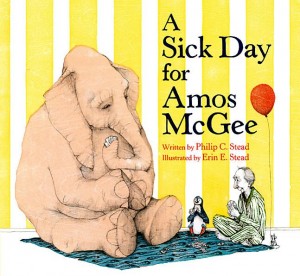Give Genre Blending a Go
By Julie Mills, Learning & Information Services Supervisor
Do you ever get stuck in a genre? I do. It seems all I want to read is magical realism. But if I had stuck to only reading that one genre, I would have never tried what has now become my all-time favorite book series, the All Souls series by Deborah Harkness! I was so surprised to see that science fiction/fantasy genre sticker on the spine of “A Discovery of Witches”, but I am glad I did. It opened my eyes to what my Reader’s Advisory professor taught so well, that we need to read other genres not only to better help our patrons, but also for ourselves. Even after reading about witches, vampires, and daemons who do magic and time travel, I still would not classify this as science fiction.
A popular series that you might not realize is a blend of several different genres is Diana Gabaldon’s Outlander series. Set in Scotland, the author combines elements like romance and historical fiction with science fantasy. Following Claire Randall from 1945 to the eighteenth century allows for a lot of history to be woven in, and still gives fans of romance plenty to enjoy. A series such as this one will bring reader’s over from other genres which greatly enhances the field of literature. If you like the Outlander series but have already read them, you might enjoy “The Time Traveler’s Wife” by Audrey Niffenegger. This time it is the husband who does the time traveling, and readers will be transported back and forth to other decades while Henry and Claire fight to hold onto their relationship as this happens. Many, including the author herself, have found it difficult put this book into one specific genre. And much like my surprise at the label on “A Discovery of Witches”, Niffenegger states that she was hesitant to call it science fiction. It seems that if the author prefers to keep the labels at bay, then we should learn to choose our next read with the same open mind.
And even if those styles aren’t your favorites, there is a another, newer trend in genre blending that combines true crime with memoirs. Think about books like Michelle McNamara’s “I’ll Be Gone in the Dark” where the aspect of the author’s real-life experience joined to the story adds a deeper dimension to what could be a lesser, sensational read that exploits the crime. “I’ll Be Gone in the Dark” follows the case of the Golden State Killer that the author researched relentlessly right up to her untimely death. The details of the authors obsessive experiences are as interesting, if not more so, than the actual subject.
These examples have barely scratched the surface of what you may discover if you are willing to look outside the normal lines of your ideal story line. Another book that comes to mind is “Double Wide” by Leo Banks. Technically classified as a western, I would have never picked this up had it not been for an assignment, and I would have missed out on a book I thoroughly enjoyed. Ok so it also is in the mystery/crime/noir genres that I love, but I would have never touched a book with a western genre sticker on it before now. The main protagonist is washed-up baseball player Whip Stark who is thrown into solving a murder. Helping him is his band of misfits that live with him in the mobile home park he created in the Arizona desert.
These examples have barely scratched the surface of what you may discover if you are willing to look outside the normal lines of your ideal story line. Mixing it up with genre blends could be what the future of literature looks like. A changing landscape that does not keep everything neat and tidy will help literature grow and also feed readers with big appetites for a steady supply of great reads.
Let us help you get unstuck from reading your same old genre with some recommendations in person at the Reference desk or by requesting an online personalized reading list from our website. You may be surprised at what new genres you like.
Email us at gro.yrarbilkhm@ffatsfer or call 785-776-4741 ext. 300 for other recommendations!



 Belle da Costa Greene. While few may have recognized that name, now a wonderful new piece of historical fiction highlights the woman’s remarkable career. I am alluding to “
Belle da Costa Greene. While few may have recognized that name, now a wonderful new piece of historical fiction highlights the woman’s remarkable career. I am alluding to “ Once upon a time, I decided I was going to draw a tree every day, and I haven’t missed a day yet. I now have over two hundred drawings and what amounts to a part-time job, because some of the drawings take more than five hours. This is caused by a mix of inexperience and trying to draw more complex ideas in an attempt to keep things interesting. Occasionally, these ideas come to me without much effort, but I have recently found myself leaning more heavily on external inspiration.
Once upon a time, I decided I was going to draw a tree every day, and I haven’t missed a day yet. I now have over two hundred drawings and what amounts to a part-time job, because some of the drawings take more than five hours. This is caused by a mix of inexperience and trying to draw more complex ideas in an attempt to keep things interesting. Occasionally, these ideas come to me without much effort, but I have recently found myself leaning more heavily on external inspiration.